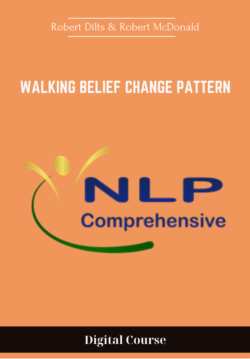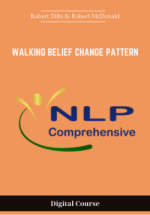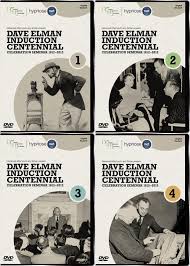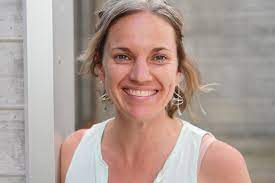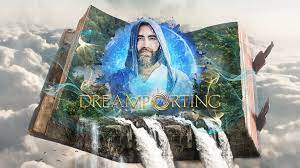Walking Belief Change Pattern – Robert Dilts & Robert McDonaldOne of the most popular areas in NLP is the set of processes for changing beliefs. I also get a lot of requests for patterns and processes you can do by yourself.So this week I’m including one of the simplest and most suitable for a “DIY” approach. Created by Robert Dilts, the “Walking Belief Change Pattern” is both powerful and easy to use, even if you don’t have a lot of experience with NLP.Since recognizing a belief that is worth changing, and how to create a good replacement are critical elements, I’m including an introduction to the area from our Master Practitioner Training Manual.This is a complete client session where Steve takes a client through resolving his issues and limiting beliefs about money. From the intro: “Simon had no trouble motivating himself positively to run a 5K race, which he loved, but he completely avoided dealing with his finances. When a letter came from the IRS, he felt anxious, but then put the letter away unopened, paralyzed by competing fears—of becoming destitute, or becoming like his father, whose whole life was consumed by financial matters. “It’s kind of an anxiety about money. And I originally thought—‘OK, it’s a weird belief.’ . . . It’s actually two fears, and…”Enjoy!Tom DotzWhat Is A BeliefWalking Belief Change PatternLimiting Beliefs About MoneyWhat Is A Belief?The dictionary defines a belief as “an idea or judgment held as true or valid.” Beliefs are derived from experience, assessments or interpretations which we apply to other experiences. Like other parts of our maps of the world, beliefs are made with the mapmaker’s tools – generalizations, deletions, distortions. A map of Colorado generalizes in representing all paved roads with one type of symbol, no matter the differences in road surface, grade or other features. It deletes many details – wildlife crossing signs, waterfalls and other landmarks along the way, the great pie shop on the side of the road, the notorious speed trap. It distorts the landscape, representing the state two-dimensionally, for example.Nevertheless, a map and its representation can be an invaluable tool in finding ones way around unfamiliar territory. Successful navigation is a process of comparing the territory with the map, using the symbolic representation as a guide. Good navigators are aware that a map is only as useful as its representation is accurate. Maps can be outdated or simply wrong. A navigator who insists upon following the map despite evidence that it doesn’t match the territory will surely be lost. Beliefs must also be continually updated compared to the experiences they describe in order toBeliefs enable us to operate on the world in many useful ways. Most of our beliefs are helpful. Upon spying a doorknob, most of us will operate on a generalization based on years of similar experiences: we guess that turning the thing will open the door, unless it’s locked. If so, we resort to a series of generalizations about how to open a locked door, or perhaps how to interpret the fact that the door is locked. In the case of the Men’s Room door, we might assume it was occupied. We wait. Arriving at an office building to find it locked, we might make the opposite assumption – that it’s unoccupied. Growing up is in part a process of learning to generalize in this way.Beliefs are built like other learnings, from our experiences. We learn through§ Direct experience§ Modelling others’ experiences§ Indirect experience.Beliefs built on direct sensory experience are usually more functional than beliefs which are derived from less direct sources. Some people build a belief based on one compelling experience – Steve Andreas talks about “the guy who knew that all Indians walk single file, because he saw one once.” Others have much more rigorous requirements for building a belief, needing multiple examples or repeated experiences over time in order to believe. Most people also have beliefs which conflict with one another.Beliefs are perceptual filters – they are the lenses through which we view the environment. A person’s beliefs and values determine much of their personality structure. Beliefs are expressed in every choice you make – from your career to your clothes, from your lunch to your lover.Forms of BeliefThere are different kinds of beliefs, each of which influences us differently. Hearing the language pattern in which a belief is expressed is often a clue to help us detect beliefs. [Thanks to Charles Faulkner for useful discussion about types of beliefs.] The categories below are not mutually exclusive.Presuppositions are simply assumptions, like the doorknob example. This is probably the most common form of belief. We presuppose hundreds of times a day. Some presuppositions are simple expectations derived from experience. Other presuppositions are interpretations far removed from sensory data.The sun will rise.Traffic will slow down at rush hour.My clothes will fit.Hair grows.Babies can’t read.Men want only one thing.Business people care more about money than relationships.Without presuppositions, we would be unable to function.All beliefs are presupposed to some extent. The more deeply presupposed, the more unconscious they are.Cause-effects describe relationships between actions and responses or reactions.Adding baking soda to my batter will make it rise.Pushing down on the jack handle will raise the car.Planting a seed will yield a harvest.Sunbathing will cause skin cancer.Giving of myself to others will surely cause them to reciprocate.Complex equivalences ascribe meaning to our experience. Among them are values and criteria.“All heiresses are beautiful.” John Dryden, King Arthur.“A great fortune is a great slavery.” Seneca.“You catch more flies with honey than with vinegar.” Mary, Lara’s mother.[“Who wants flies?” Lara.]“Love means freedom from all conflict.” Krishnamurti.“All men are liars.” TV commercial.Values are desirable principles and qualities. What we value will determine what kinds of experiences we seek and repeat in our lives, and what we avoid.Criteria are standards for evaluation, measuring sticks. Criteria are used to gauge the extent to which our values are met in a particular experience.In the end, the only thing that really counts is shareholder value.“Nothing is at last sacred but the integrity of our own mind.” Emerson.You can’t be too rich or too thin.“Only passions, great passions, can elevate the soul to great things.” Diderot.He who dies with the most toys wins.“Hold a true friend with both your hands.” Nigerian proverb.“Is life so dear or peace so sweet, as to be purchased at the price of chains and slavery? I know not what course others may take, but as for me, give me liberty or give me death.” Patrick Henry.ContentSome beliefs are more useful than others. There are beliefs which empower and motivate us:“The more I give, the more I prosper,”“I am lovable.”“There’s always a way.”“‘Take what you want,’ said God, ‘and pay for it.’” Spanish proverb.“If one person can do it, anyone can learn it.” NLP presupposition.“Old men are always young enough to learn, with profit.” Æschylus.There are also beliefs which limit us:“Everyone has his price.”“I am unworthy.”“Children should be seen and not heard.”“I can’t do my best because management doesn’t walk their talk.”“It doesn’t matter that you’re not pretty – you’re smart.”“You can’t teach an old dog new tricks.”Limiting beliefs can be changed. This section of the training presents many ways to detect and change limiting beliefs into empowering convictions. In what areas of your life could you expand the choices in terms of what’s possible and worthwhile?Consider the following content areas when examining your beliefs for limitations:HealthProsperityRelationshipsCreativityAgingFunWork Change: pain vs. gainSpiritual life The Walking Belief Change ProcessPart ICreate a label for six locations of change: Current Belief – Open to Doubt – Museum of Old Beliefs – Preferred Belief – Open to Belief and The Sacred Place.Place the labels on the floor in a clockwise direction around an imaginary dinner table, as though they were place settings.Identify a Current Belief, about yourself, that limits you in some way.Identify what you would rather believe, your Preferred Belief.Now, establish a ” location anchor” for each of the six labels. That is, physically step into each location of change and think of an experience which fits its description. It’s often most effective to use personal experiences and beliefs rather than philosophy. Notice where in your body each experience resides, and notice what movement your body makes in each location of change. Break state between each location of change. (It’s also interesting to notice the visual, auditory and kinesthetic submodalities of each experience.)Examples:Current Belief: The belief that limits you in some way.Open to Doubt: “Maybe I’m not repulsive.” “Maybe the moon doesn’t follow our car.”Museum of Old Beliefs: “I’m stupid.” “Steaks grow in the meat section of the store.”Preferred Belief: The belief you’d rather have.Open to Belief: “Maybe I am attractive.” “Maybe the cold war is really over.”The Sacred Place: “Children must be protected from brutalization.”Part IINow, start at the beginning again. Step into the Current Belief location and access what you currently believe, as well as your Limiting Belief. This time, slowly and gently walk the Limiting Belief directly into the Open to Doubt location (al- lowing the Limiting Belief to be transformed into Doubt ). Then walk the Doubted Belief into the Museum of Old Beliefs, and physically place that former Limiting Belief near other former beliefs in the Museum of Old Beliefs.Now, step into the Preferred Belief location and access what you want to be- lieve. Slowly and gently walk your Preferred Belief directly into Open to Belief (allowing it to be strengthened), and then walk your Preferred Belief into thea. Sacred Place (allowing it to become very strong).Finish by feeling the now-sacred Preferred Belief in your body and stepping directly into the Current Belief location (allowing it be transformed). Feel your Preferred Belief as something you Currently Believe. Repeatedly step between The Sacred Place and Current Belief several times.Now, think of what you currently believe. How is it different than it was?Buy Now!Shopping Information– We provide digital products. Most of products will come to you immediately. But for Pre-Order product, we need 3-7 days to order it for you. – After you order, the system will create your account and send it to your email. And after your payment, you will receive the download link at the account or directly via your email. If you have any problems with your order, you can contact: . – If you cannot find the download link, please don’t worry about that. We will update and notify you as soon as possible at 8:00 AM – 8:00 PM (UTC+8).Let’s get things started! We will go with you!
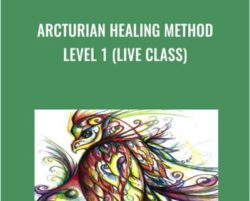 Arcturian Healing Method Level 1 (Live Class)
₹16,766.00
Arcturian Healing Method Level 1 (Live Class)
₹16,766.00
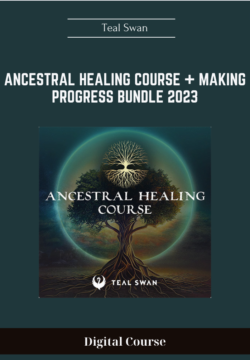 Ancestral Healing Course + Making Progress Bundle 2023 – Teal Swan
₹29,714.00
Ancestral Healing Course + Making Progress Bundle 2023 – Teal Swan
₹29,714.00
Walking Belief Change Pattern – Robert Dilts & Robert McDonald
₹4,814.00

